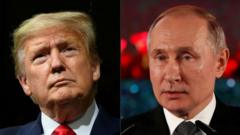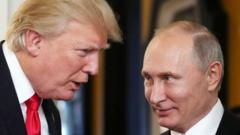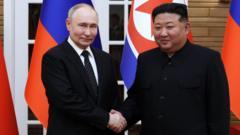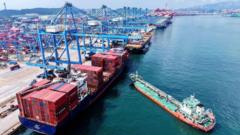New discussions surrounding US tariffs on India highlight the geopolitical tension surrounding energy imports and ongoing trade negotiations, particularly in the context of the Russia-Ukraine conflict.
US Considers Increased Tariffs on India Resulting from Trump-Putin Meeting

US Considers Increased Tariffs on India Resulting from Trump-Putin Meeting
Potential audit on India’s trade relations if diplomatic talks falter.
US Treasury Secretary Scott Bessent has announced that additional secondary tariffs on India may be imposed depending on the outcome of President Donald Trump's impending meeting with Russian President Vladimir Putin on Friday in Alaska. In an interview with Bloomberg TV, Bessent indicated that current trade strategies might shift based on the discussions about the ongoing conflict in Ukraine, emphasizing the repercussions of India's recent increase in Russian oil imports.
Earlier this month, Trump implemented a 25% penalty on India, adding to existing tariffs on oil and weapon purchases from Russia. Amid efforts to mediate a ceasefire in Ukraine, Trump has stated there will be "severe consequences" if Moscow does not comply with peace negotiations. Bessent underscored the need for European allies to participate in sanctions, spotlighting India's trade activities as a potential concern.
The surge in Russian crude imports, which accounted for 35% to 40% of India's oil purchases in 2024—up from a mere 3% in 2021—has aggravated relations between the US and India, complicating existing trade talks. While India prioritizes low-priced oil for its citizens' economic welfare, Bessent has labeled India's stance on trade negotiations as "bit recalcitrant," particularly regarding tariffs on agricultural products.
Despite ongoing dialogues, experts caution that India's resistance to lower duties on certain goods might jeopardize any potential agreements. As part of these trade dynamics, Trump's increased tariff rate of 50% scheduled to take effect on August 27 alarms trade analysts who worry it resembles an embargo, classifying India as the most heavily taxed US trading partner in Asia. This could adversely affect sectors within the Indian economy, like textiles and jewelry, and might result in a reduction of growth by approximately half a percentage point.




















